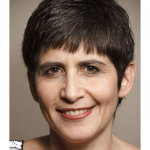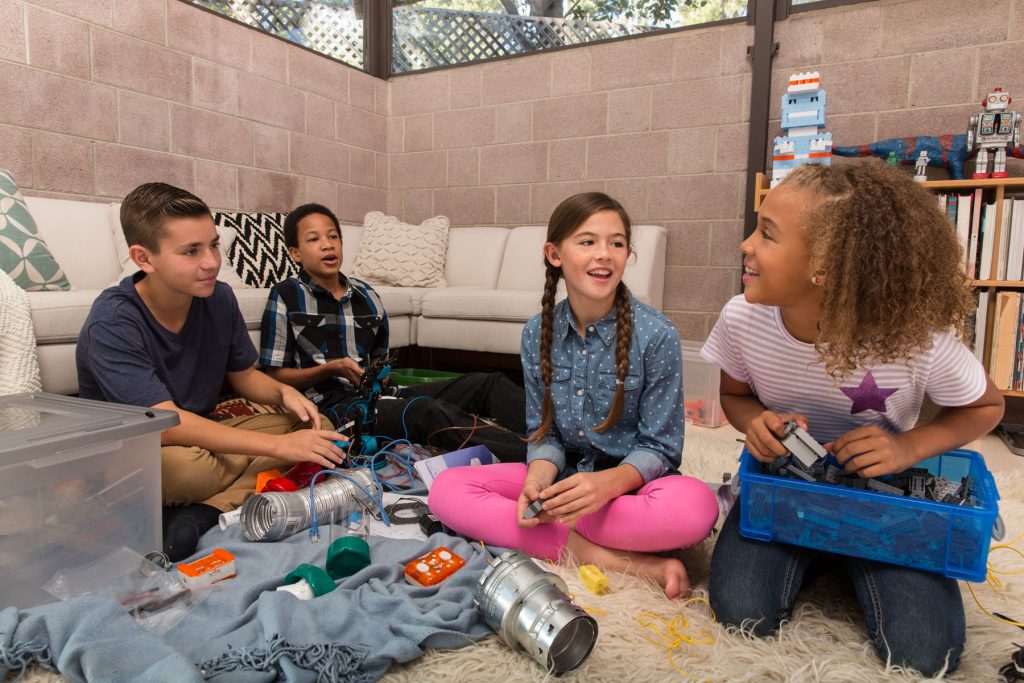
Inspiration is priceless, and yet, costs nothing
If we want more girls in STEM, it’s our responsibility to inspire them
What inspired you as a child? Was it the first time you saw a pianist’s fingers effortlessly create an enchanting melody? Perhaps it was the moment you saw lithium reacting with water in a science lesson. Or maybe it was an Olympic athlete from your home town, winning a gold medal right before your eyes.
No matter what path we choose in life, it’s impossible to ignore the importance and formative effects that inspiration – and ultimately, role models – have had on us all.
Last year, Microsoft released ground-breaking research which showed that most girls in Europe become engaged with science, technology, engineering and maths (STEM) subjects around the age of 11, before their interest begins to wane by the age of 15.
STEM subjects, studies and careers continue to be male-dominated, and last year’s research shed light on some of the reasons why girls and young women disengaged or were discouraged from walking down STEM paths.
Building on last year’s study, Microsoft has now revealed new research focusing on girls and young women in the US, and some interesting parallels can be drawn between both European and American girls.
At the end of this comparison, one clear message should be very apparent: If we want to encourage more girls and young women to pursue STEM fields, planting the seeds of inspiration from a young age, is absolutely vital.
The importance of role models
Across both the US and European research, one finding is key – role models play a significant part when it comes to the level of interest shown in STEM subjects by girls and young women.
While parents and teachers are the most obvious role models, especially for young girls, the definition of a role model in this case can be quite flexible. Role models can also include mentors, or leaders/influencers in a STEM field – or even an individual a child has met at a STEM-related club or activity.
Regardless of the specific role model in question, the European study shows that role models are the most important factor for driving interest in STEM fields. Some countries such as the Netherlands show particularly low levels of role model exposure, with only 35 percent of respondents stating that they have encouraging STEM role models.
Russia, on the other hand, scores the highest, with 55 percent of girls and young women stating that they have encouraging STEM role models. A total of 60 percent of girls in Russia also report that teachers regularly talk to them about STEM topics.
Interestingly, in the US, less than half of the 6,000 girls and young women surveyed state that they know a woman in a STEM profession. In addition, the research shows that girls who do know at least one woman in a STEM field are substantially more likely to feel more confident and empowered when they carry out STEM activities.
An encouraging statistic in the US research is one that focuses on engagement with parents, with 65 percent of respondents stating that at least one parent regularly talks to them about STEM subjects.
Compare this to the European study, where an average of 38 percent of girls believe they receive STEM encouragement from their parents, and an interesting contrast is shown. Some countries such as the Czech Republic and Slovakia show that only 16 percent and 26 percent of girls, respectively, believe that their parents actively encourage them to pursue STEM interests.
Looking at the data as a whole, in general, we can see that most girls do not have any female role models in STEM to look up to. It’s no surprise, then when US girls are asked to describe a typical scientist, engineer, mathematician or programmer, 30 percent envision a man in those roles – As do almost 40 percent of adult women—and 43 percent of women in STEM and tech fields.
Overall, both sets of research show just how crucial female STEM role models are at sparking interest, and it’s an observation that makes sense.
Without regular exposure to female STEM role models, many young girls are likely to feel that an interest in STEM is something that moves against the grain of societal norms, likely lending to feelings of friction or uncertainty. If, on the other hand, more female STEM role models are visible, these perceptions can change, giving girls and young women more confidence in chasing their passions.
In addition, the responsibility lies on parents and teachers to show regular encouragement and motivation, in letting girls know that even if there are less women in STEM fields, it’s a perfectly acceptable, rewarding path to follow.
Sylvie Laffarge, Director of Philanthropies, Microsoft Europe, states that “The European research, which has now been echoed by the US study, highlights very similar findings – the need for us to keep focused at changing the male-dominated status quo in STEM fields by exposing more positive female role models to young girls.”
“It is also very important to make sure that STEM competence is not portrayed purely as a path that leads only to careers in fields such as game programming or app development. By showing the role of STEM skills in a variety of professional careers from fashion blogging to architecture, from digital entertainment to emergency relief, we can shift mindsets.”
STEM role models at Microsoft
Making STEM real
For an artist, inspiration can take the form of many things, from a babbling brook, to the way sunlight streams through the leaves of a tree – almost any moment can stoke the motivational fires of creativity and ambition.
Now let’s imagine another scenario. A young child, in a classroom, staring at a textbook, mindlessly writing out chemical structural formulas. To them, the black ink on the paper is nothing more than an uninspiring web of ‘H – O’ diagrams.
They know that the H stands for hydrogen, and that the O is oxygen, and that there’s a single bond between the two – but so what? It’s nothing but a dull diagram – one that, with any luck, they’ll memorise for their exam next month, and never need to worry about or use again.
This is an example that might resonate with more than a few of us. We all had subjects in school that were uninspiring, after all. But imagine, instead, if this child’s teacher grounds these diagrams in reality.
With the addition of another hydrogen atom, something as innocent as water now becomes hydrogen peroxide – something that you definitely shouldn’t drink, but could instead use as fuel for a rocket. In fact, that’s exactly what this teacher decides to demonstrate in the classroom.
They create a miniature hydrogen peroxide bottle rocket, demonstrating the power that even one tiny change can make in a molecular compound, before explaining how compounds can be manipulated to create everything from poisons, to life-saving medicines, with infinite possibilities in between.
These sorts of relatable examples which ground STEM subjects in reality, are crucial. Lines of code or pages of maths calculations are not enough on their own to spark interest in a subject. It’s up to teachers and parents, to demonstrate the practical, exciting uses of STEM knowledge, so that children can be inspired by the possibilities that they offer.
This is supported by data from both the European and US STEM research. In the US study for example, it’s shown that perceptions of STEM subjects can be changed if teachers provide students with real-world examples.
This correlates with the EU findings, where real-life applications and practical hands-on experiences are the second highest factor behind the availability of role models for influencing interest in STEM studies.
It never ceases to amaze me how we all so vividly remember inspiring teachers, even from a young age, who touched our lives in meaningful ways, who motivated us to explore and push our limits – Sylvie Laffarge, Director of Philanthropies, Microsoft Europe
Microsoft Innovative Educators
The path forward
Microsoft’s research in both the US and Europe has highlighted that two of the most important areas we all need to focus on to change the male-dominance of the STEM world are the visibility of positive female role models, and the grounding of subjects to the real world.
Both of these areas can be boiled down into one word: Inspiration.
Without knowing the possibilities and opportunities that STEM subjects can offer – from designing the next great skyscraper, to curing diseases, coding the next huge app or countless other possibilities – it’s no surprise to see a waning interest in related STEM subjects.
Combine this with the fact that the majority of girls and young women clearly feel that STEM subjects aren’t targeted to them – thanks to a lack of role models and the larger amount of men in the field – it’s clear that more work needs to be done to inspire the girls of today, to become the great scientists, engineers, programmers, coders, and mathematicians of tomorrow.
Awareness of these issues, as made possible by studies such as Microsoft’s STEM research, is the first step. The ball is now in the court of tech companies, STEM organisations, parents and teachers, to take these learnings and focus on doing all they can to encourage girls and young women to pursue their STEM interests.
From encouragement from parents and more engaging lesson plans, to extracurricular STEM activities and clubs and making sure that exposure to more female STEM role models is provided, we can all work together to create a glimmer of excitement and a sense of wonder, in the eyes of each and every child.


























